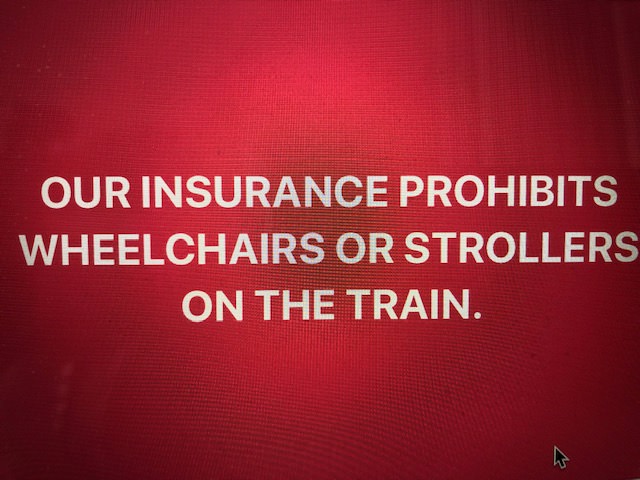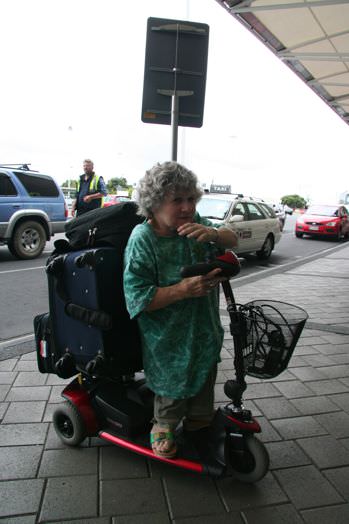
Our attempt to board the St. Louis zoo-line railroad almost got us arrested in May 1993. Robert and I planned to ride the train and use Robert’s wheelchair to reduce walking between the zoo’s exhibits. But the sign posted at the railroad station telegraphed trouble ahead:
OUR INSURANCE PROHIBITS
WHEELCHAIRS OR STROLLERS
ON THE TRAIN.
Because this was a clear violation of the Americans with Disabilities Act (ADA), we stayed in line determined to ride with Robert’s wheelchair.
Want to subscribe to receive blog updates sign up today!
When we reached the front of the line, Robert wheeled onto the platform but was told he must leave the wheelchair at the station. The attendant had no interest in Robert saying he needed the wheelchair when he got off the train. She was adamant he leave the wheelchair behind. We asked to see the manager when she wouldn’t budge even after I told her this refusal was an ADA violation.
Initially we blocked the path of people waiting to board the train, but agreed to step aside while waiting for the manager. When several trains came and went with no arrival of a manager, the need to take further action was evident.
We moved back to the front of the line and when the next train pulled into the station, moved onto the platform ready to board with the wheelchair. However, our plan was thwarted when several zoo security staff surrounded us, blocked our attempt to board, and ordered us off the platform so that the train could leave the station.
Now we had a choice to make. We could cause the trains to stop running by refusing to leave the platform and be arrested for refusing to move. The alternative was to step aside again based on the assurance that the manager was on his way. We chose to be reasonable and moved off the platform so that the train could leave. Even so, we kept the pressure on by blocking the front of the line so that no one could board incoming trains. But this plan was foiled when staff began loading trains from the other end of the line.
It took another 30 minutes for the zoo manager to show up. We were grateful that he recognized separating Robert from his wheelchair was against the law. Even though he wouldn’t allow the wheelchair on the train, the manager offered an acceptable alternative accommodation. We rode the train and watched the wheelchair ride alone in an electric cart alongside the train.
We declined the manager’s offer of a designated driver to ride us around the zoo in an electric cart. A principle was at stake. We didn’t want special treatment. Our only desire was to ride the train like everyone else.
This post is a condensed excerpt from Chapter 14, Let Me Ride, pages 139-141, in “ALWAYS AN ADVOCATE: Champions of Change for People with Dwarfism and Disabilities.” Buy your print or e-book copy today at https://www.amazon.com/dp/1737333600/.



